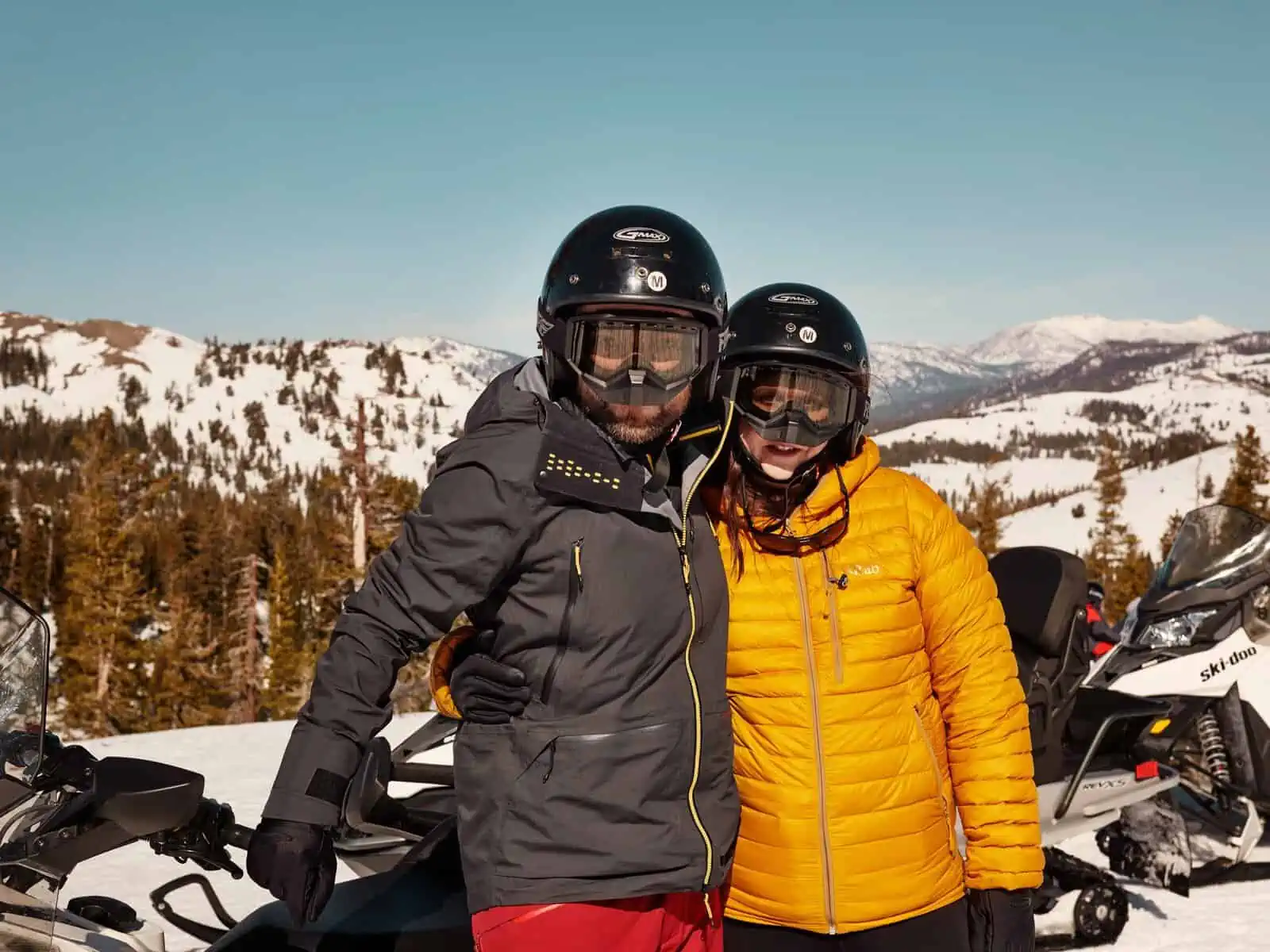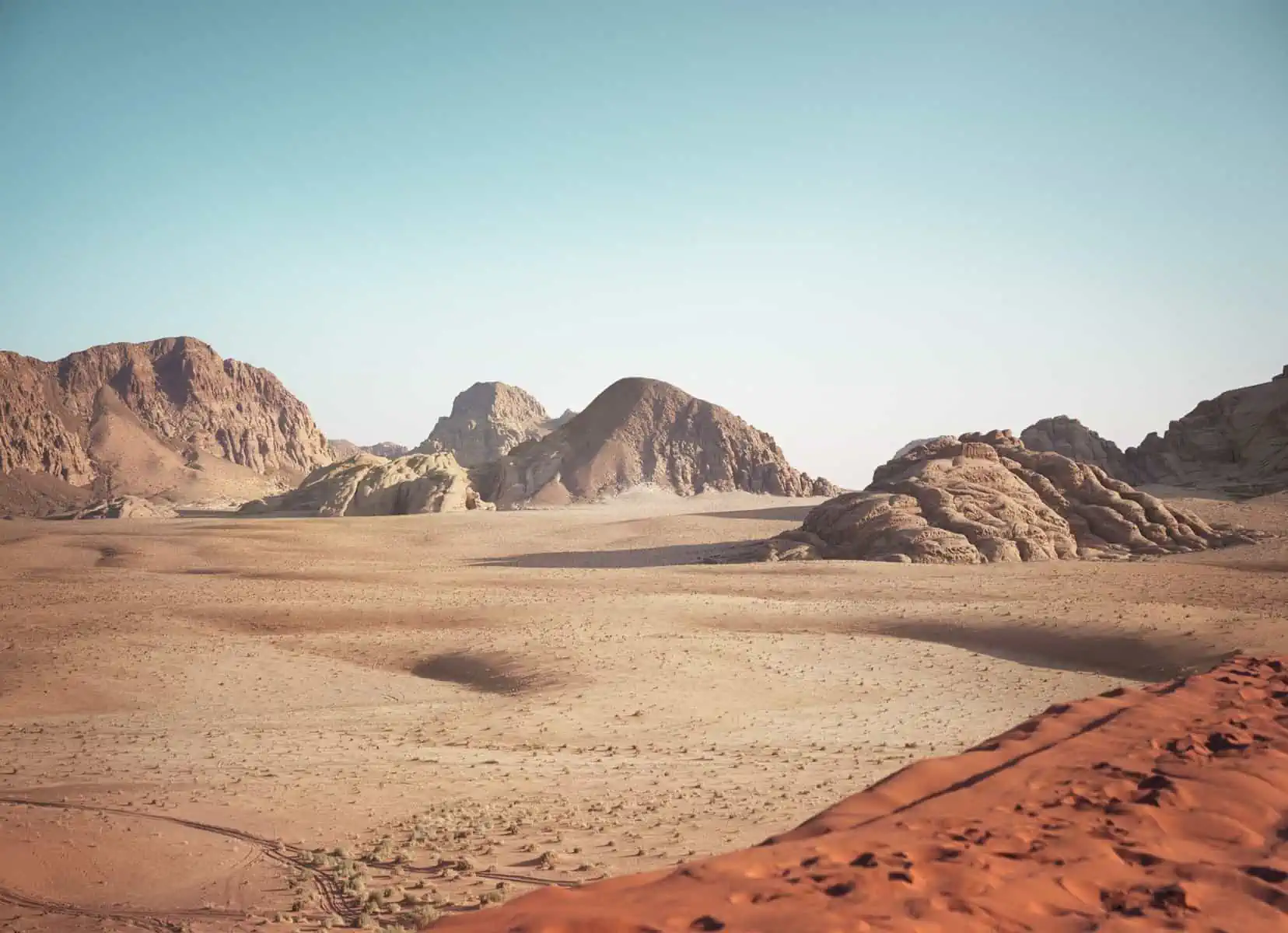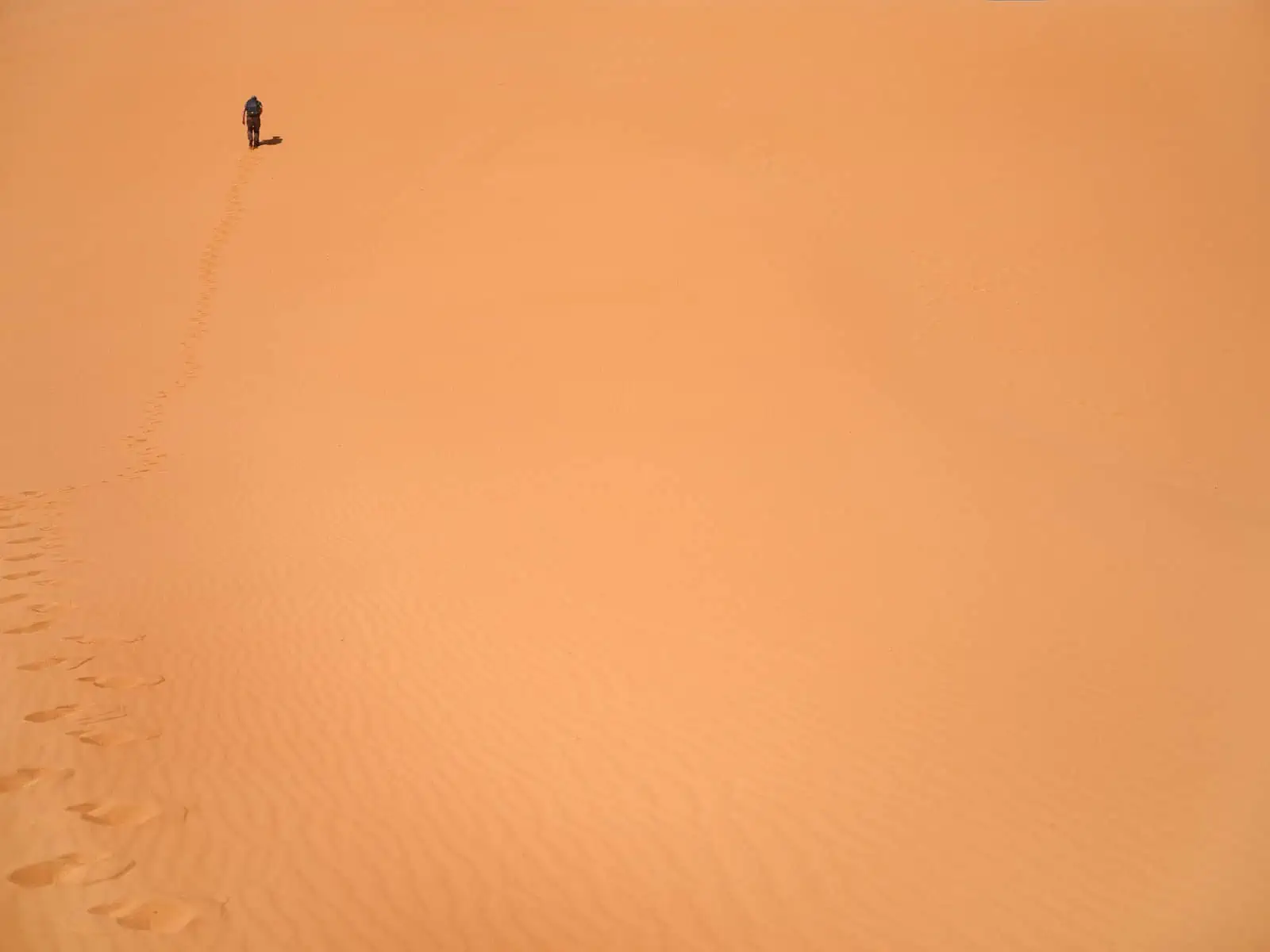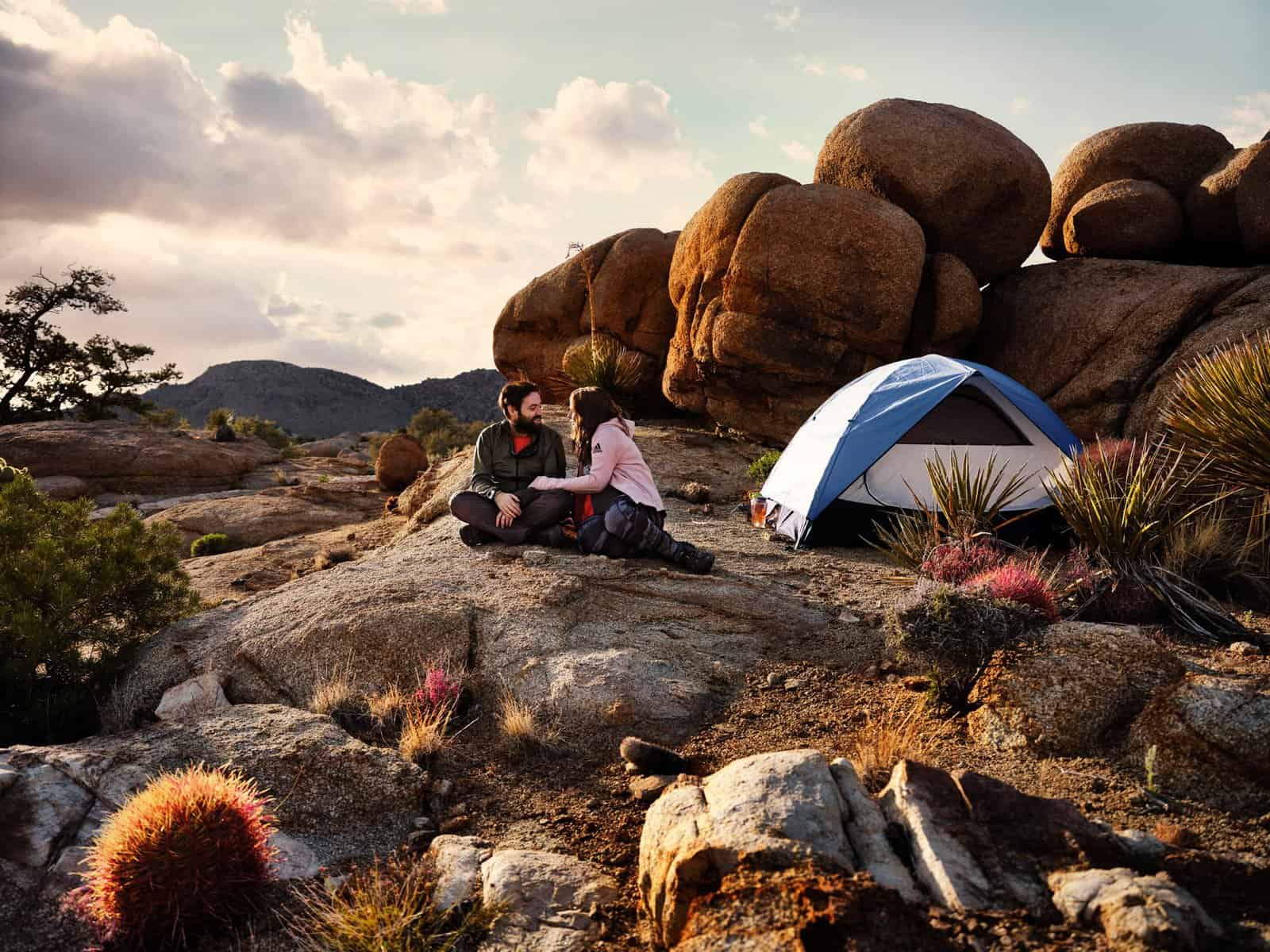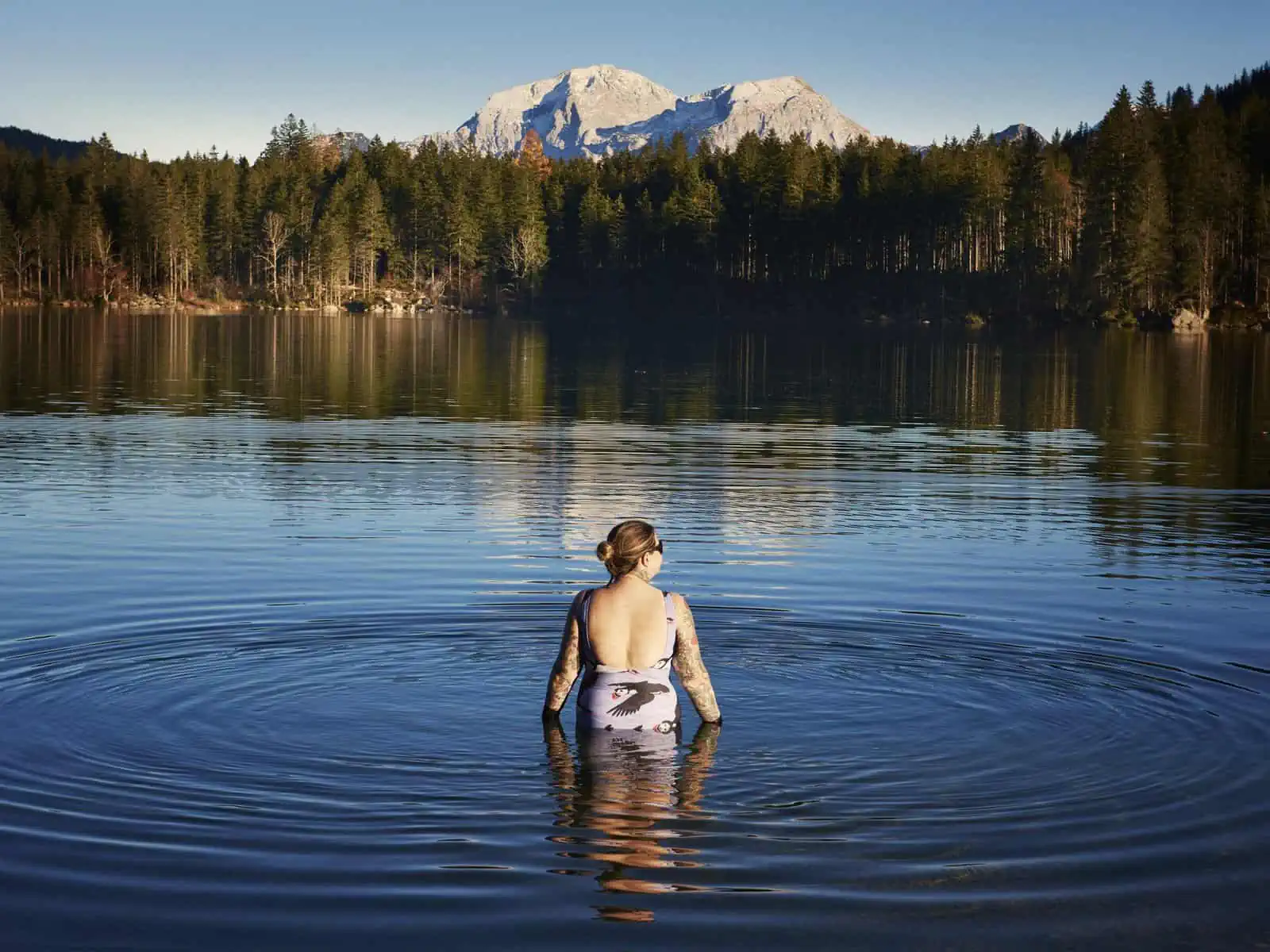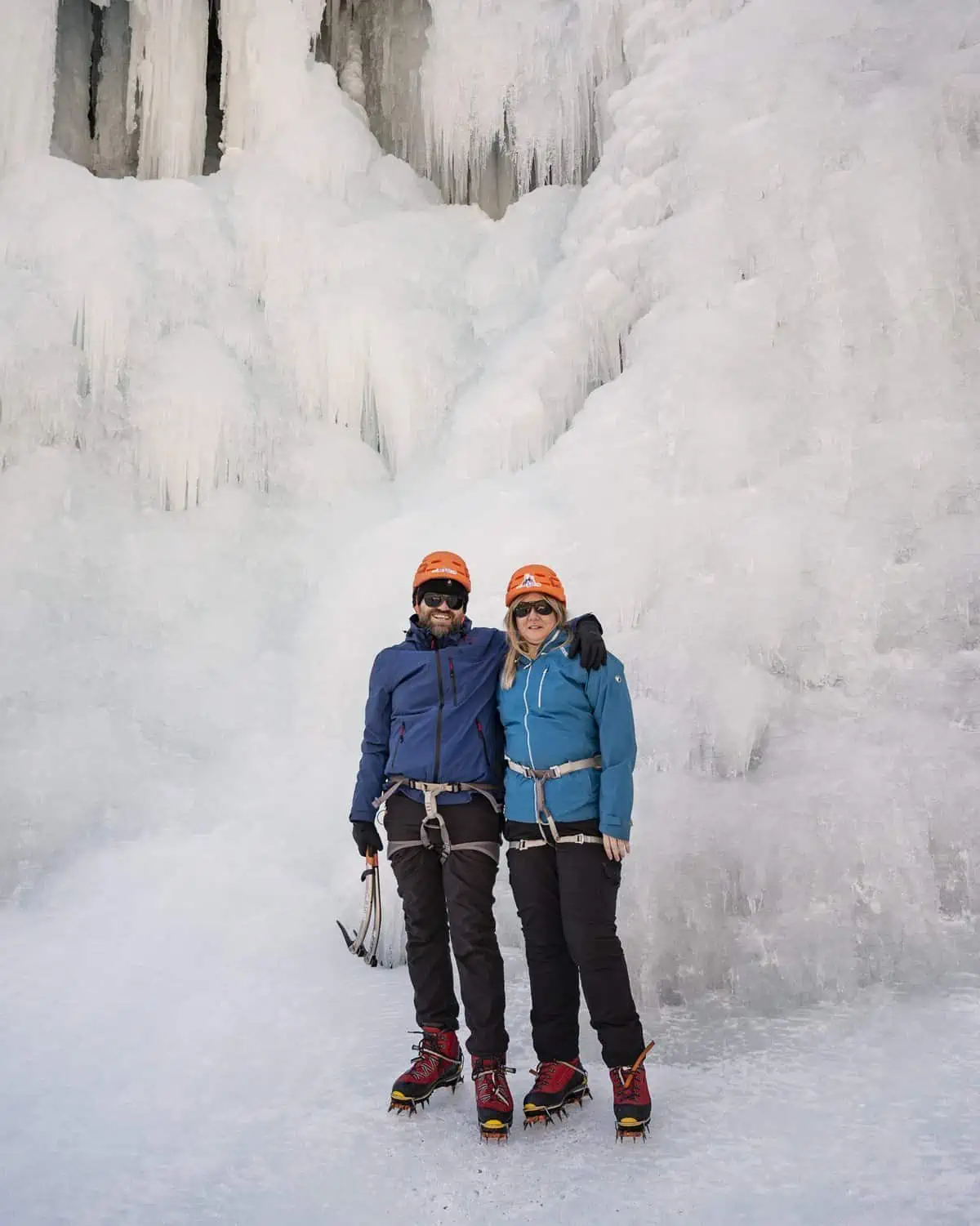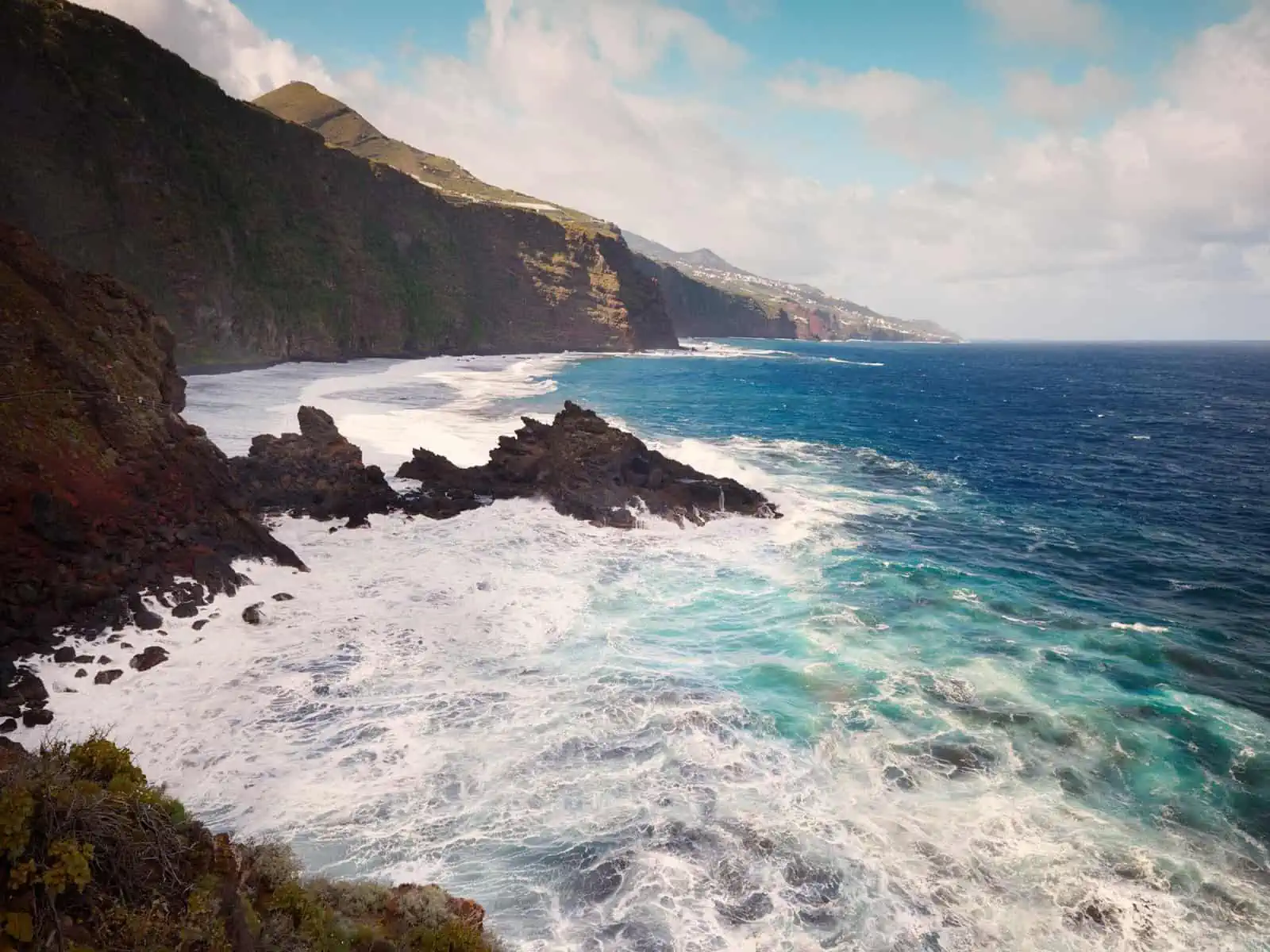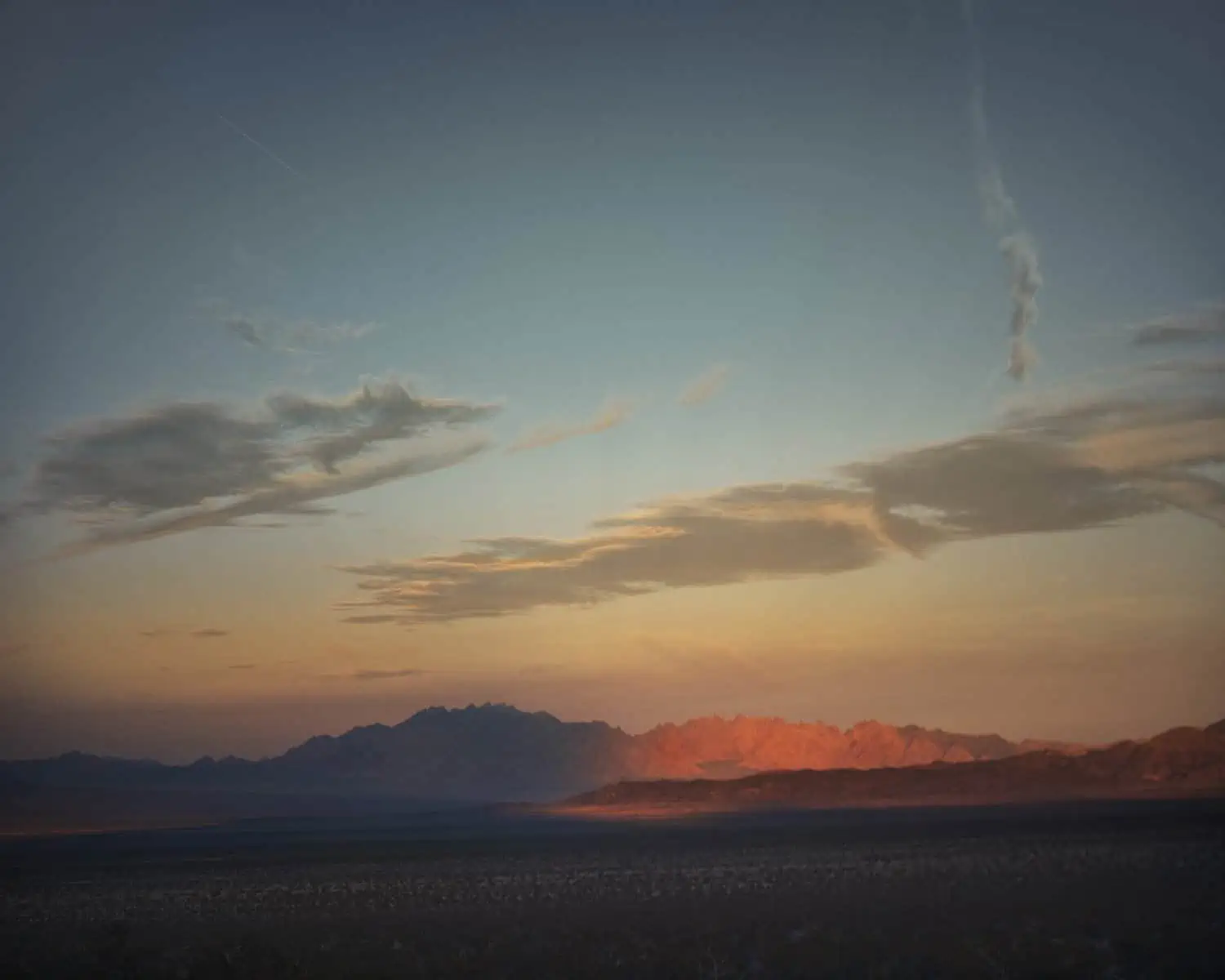We’ve been going on adventures seriously for the past seven or eight years. In this time, we’ve honed planning adventures with confidence down to a fuss free, fine art! This step by step guide outlines exactly how.
To be honest, planning adventures wasn’t easy for us at first – we knew we wanted to do certain things and as we found more and more things that interested us around travel and the outdoors, this list grew. However, it seemed overwhelming, especially when we started looking at some of the bigger trips we wanted to do. There seemed to be so many moving parts we needed to work out – no clear way of finding information about certain places and it would often fill us with anxiety about things we really wanted to look forward to. Nowadays, we have a pretty good handle on things and have got adventure planning down to a fine art. So, we wanted to put together this resource list to help make the process easier for you, share our tips, techniques and thinking points, in a digestible a way, to help you make the most out of your adventure trips for years to come.
Skidoo’ing along the PCT in Northern California was without a doubt one of our favourite adventures to date!
Adventure planning Guide: Quick Links
- Part One: What, Where, Why and How
- Part Two: Day or Shorter Adventures
- Part Three: Longer Trips & Adventures
Firstly, why is it important to plan an adventure ahead?
The more prepared you are, the more likely it is that what you want to do will be a success. Imagine having travelled for hours and hours to get somewhere only to realise that you don’t have the right Visa. Or that you really needed to build up to that ambitious thing you had in mind. These things might sound like worse case scenarios, but they’re all things that can be avoided by knowing exactly what you’re getting into before you do it. Planning adventures in this way has saved us time, money, frustration – and it can for you too. This guide can be used regardless how many days you’re going for, your skill length, the type of adventure and anything in between.
Something to get across right from the start – there is a lot of information included in this resource as we wanted to be as thorough as possible in helping you plan an adventure. However you’ll likely find that some adventures take more planning than others. We’ve put together what for us, is an exhaustive list when it comes to adventure planning, but there may be elements specific to you that you want to add in or take away to suit your needs.
We also think it’s important to distinguish between planning for a day adventure, planning for a couple of nights and planning for a much longer trip around a specific adventure. We all have totally different wants, needs and definitions from the word ‘adventure’ so planning an adventure is likely to look totally different for you than it will the next person. There’s a good chance you have arrived at this resource for any number of the reasons above. This is where things often seem to get complicated, because after a quick Google search, you might find a lot of results are geared towards much longer travel plans. This of course isn’t the reality for everyone, and not everyone wants to go off on a six month adventure! We genuinely believe it doesn’t really need to be that complicated and a lot of this information only confuses you more and takes you further away from what it is you might want to do. As we move on, we decided to break this down into planning for a day adventure and planning for a longer adventure, as it seemed to make the most sense. We think a lot of what we’ve outlined between the two can interlink, but if you’re looking for an idea of how to plan a multi night trip (perhaps backpacking etc) you might want to take most of your cues from the advice in planning a longer adventure.
Tip:set yourself aside some time for adventure planning. The size and scale of your trip will determine how long you need to spend planning. It can be quite nice to put aside some evenings to make future plans and it can actually turn into something you look forward to. It’ll also help you feel a lot more organised as you go through planning an adventure and get closer to your trip. We find it helpful, such as when applying for Visas or entry requirements, to set ourselves calendar reminders, or some notes to check back in on certain things the next time we have a planning session.
Wadi Rum, Jordan, where we over landed, with a guide through the desert and slept under the stars – an unforgettable experience which made all of the planning well worth it!
Planning adventures Part One – the what, where, why and how
You might be at a stage where you have an idea where you want to go and what you’re interested in. You might also be coming to this knowing you want to do something that puts you out of your comfort zone, but aren’t sure where to start. Either way, we believe that there’s kind of a conceptual side to things that if you get clear on this first, will help make planning adventures a lot easier. Here are some of the questions we ask ourselves at the beginning stages of planning adventures:
What is it That I Want to Do?
This might seem obvious, but sometimes, the first step to adventure planning is actually working out what it is you want to do. This can sometimes feel overwhelming in its own right. If you’ve got a craving for adventure but don’t know what, use these questions and simple steps below to help you get clearer on what it is that interests you.
- What interests me right now? It could be a few days walking in Lanzarote, canoeing through the Masurian Lake District in Poland, wild swimming in the Alps, climbing or an incredible road trip full of mesmerising alpine drives. Maybe its paddle boarding the Fjords of Norway or a guided expedition to a peak. It’s important at this stage to not let fear get in the way of your decision making – what is it that you really, really want to do? This can actually be a really difficult one sometimes, so spending some time thinking about what you’ve enjoyed previously – even if you’ve never done an adventure before can be helpful. If this is your first time, think about holidays you’ve enjoyed and what you enjoyed about them.
- 2. Where interests me? Have I seen any inspiration from friends/family/online that has really caught my attention? We’d recommend checking out our destination guides and adventure planning resources for some inspiration, which are frequently being updated. We also love to put together folders of images we see on the likes of social media, Google Searches, even making wishlists on things like AirBnb of places we’d like to visit so that we can go through at a later date. We also love Cicerone guides – they’ve become a bit of a holy grail for us when it comes to getting inspiration for visiting a place. There are simply so many of them available that can give you some really good ideas when it comes to hikes, or even how you could put together multi day trips in certain destinations. We also think they make nice mementos to remember when you get home, too. When it comes to Google searches, you can keep this organised by keeping notes on your phone with specific locations and links that you can look back on later.
We also want to make another point, your adventure plans don’t need to have a big why. We know, we know, maybe that’s an unpopular thing to say in the outdoors/adventure world but not every single adventure you go on needs to have a big, overarching reason why you’re doing it. Whilst campaigning for charity or raising awareness around issues is fantastic, absolutely commended, it doesn’t have to be the only reason you enjoy the outdoors – however, bigger ideas often seem to come with a lot of pressure (and we’re not sure where that started and why). Simply put, your wants and desires are important too. An adventure can do a lot to fill up your cup and give you energy to put into the things that matter to you. Don’t let not having a big why stop you – go where your heart is and follow your instincts. We generally find that even when we go on an adventure that doesn’t have a big reason behind it, the things we learn from it that we take back into our everyday lives are usually pretty profound in their own ways.
When Do I Want to Go? What Season is it at the Time of Year I Want to Go?
This is going to be really important when deciding where and what it is you want to do. If you need to work around holiday time from your day job, you may be limited in the time of year you can go. If this is the case think carefully about your adventure plans. For example, you might want to go to Austria in February to go hiking, but because of the amount of snow, you will need some fairly competent skills in winter trekking to be comfortable doing the kind of routes you might do in summer with much more ease. You may want to head to the desert in Nevada, but the only time you can go is in the summer when the heat will be unmanageable. It’s important when you plan trips to be looking into this to really think about these points when deciding when you’ll head off. If the time off you can take or when you can go are no issue – great, if not, do some research and see what is the best compromise.
Spending two months in Northern Arizona and Southern Utah working on a project sympathetic to the landscape was a real highlight for us – everyday we felt full of awe!
How Much Will it Cost and How Much Do I Need?
Probably one of the most important things you’re going to need to think about when it comes to planning an adventure is the cost. This may also have a determination on where you need to go if you’re on a budget. If you’re planning in decent time, it’s worth thinking about if there are any day to day living costs you can cut down on for a while to make it work. However if there aren’t, we’d recommend trying to get as much into place as far in advance as you can so you can realistically look at budgeting things in. If this is a real issue, this could be a good opportunity to rethink your where and what plans a little bit – could you do something similar, or even pivot by basing this adventure closer to home? Right now, you’re trying to get an idea of ballpark figures – if possible, you’ll want to have +20% as an ideal buffer zone in case there are any changes (accommodation prices go up etc). We’ll talk more about exact costs later…
Do I Have the Skills I Need For This Adventure?
If you’re prepared for your adventure with confidence and all the skills you need, you are going to have a much more enjoyable time, not to mention safer. It’s important to think about what it is you are going to be doing. If you’re planning a mountain adventure in the summer months over a period of days, it’s worth looking at what is involved in the route. Is there scrambling? Do you need to carry a heavy pack, and do you have the confidence in the areas that you’ll be relying on? Are you planning a winter hiking adventure? Do you know how to snowshoe, assess snow packs and stop your own fall? Any adventure will push you out of your comfort zone, but preparation is key to you enjoying it, succeeding, and being safe. If there are some skills you will need for your adventure, it’s worth thinking how you could start learning those skills closer to home in the time before you leave. Adventures are great like this because they can quite often lead you on other adventures.
Who Will I Go With?
What is it that you crave from this experience? The feeling of knowing you can do this on your own whilst you spend two weeks trekking alone? The connection you’ll develop with a friend or partner or a bigger group environment? It’s important to think about what it is you want and need from your experience and if you can see yourself travelling with who you want to travel with.
Over the years, we’ve spent a lot of time whilst in America backcountry camping – planning multi day hikes has allowed us to experience some of the most incredible landscapes we wouldn’t have been able to otherwise.
Planning Adventures Part Two – Day or shorter adventures
Whether you’re planning a day outdoors or you’re looking to take an adventure over a shorter number of days, there’s still planning involved. This of course isn’t as involved as planning for a longer adventure, but in order to ensure you have the best experience, it’s good to be as prepared as possible. We usually break this down into the following sections – and this is something that applies to both day and shorter, multi day adventures:
Plan Your Route
Whatever activity you have in mind, you’ll want to plan your route. This might sound obvious, but putting some time into making sure you have everything stored offline or in multiple places is a really smart idea – we try not to rely on one device only. If you’re going for multiple days, you can use the tools in section three to put together a route plan of how much distance you will cover from one day to the next, where are good places to stop etc. This can be really handy if you need to book permits for a specific location and need to specify or know where you might stay/camp on any given night. You’ll also want to think about water stops – understanding the topography of your route is really helpful here – as you can start to get a clear idea of how much water you’ll want to take with you and what resources you have available. Within this, especially if you’re going to be in the wilderness, it’s worth making a meal plan – this will also help you budget and make sure you have enough energy for your days.
Is it Within Reach?
Pushing yourself in the outdoors can feel amazing, but it also needs to be done in a calculated way. We always make sure we look at the route we have in mind, and based on our experience, make an educated decision as to whether we can realistically do this now or whether we need to build up to it. If you aren’t sure, it’s always best to air on the side of caution – so planning in some training routes in preparation can make the difference between going into an adventure with excited nerves and going in just feeling worried. Plus, the training adventures you get to do can be really fun along the way too!
Equipment
Think about what you’re likely to encounter on the adventure you’re planning, the time of year and the location. What you need to bring will of course differ through the year, but we often see people bringing way too much for a few days and too little for one. When it comes to a day adventure, think about what you’re likely to need and if there is any equipment you need to bring with you. If it’s something you’ve got that you haven’t used in a while, test it out to make sure it’s still fit for purpose. We also always make sure that we’ve got more food than we need in case a trail takes longer to complete than we thought, and depending on the temperature, always make sure that we take more water than we need too. Suncream is also another non negotiable in our day pack – even if it hasn’t forecast sun. We do this especially if we’re going somewhere where it’s snowy, and the snow is reflective, especially when sunny and can lead to fairly horrific sunburn, especially at high altitude where UV levels increase. We’d recommend putting together a list you can tick off and check to make sure you have everything you need.
When it comes to multi day adventures, it’s really tempting, especially if you’re camping for a couple of nights doing a thru hike for example, to want to bring as much stuff as possible because you don’t want to be caught out. However a heavy pack full of clothes you’re not going to wear will only add to your weight. We always opt for lightweight layers that can serve multiple purposes, and accept that we can wear the same things for a couple of days in a row! Food is always another big weight when it comes to something over a period of days, and rehydrating dried food can really significantly reduce the weight of the food you need to bring. We’ve taken to dehydrating our own food after spending many years not enjoying pre packaged things. We would really recommend the Excalibur 2400 Food Dehydrator – it was a pricy purchase, but has been well worth it, and saved us a lot of money in pre packaged food. We’ve been using for a number of years now to make our own food to cook and rehydrate on the trail. It might take a little bit more fore planning, sure, but it is well worth it when you can look forward to good food on the trail.
Fay loves wild swimming, and particularly in very cold water. This project and the planning involved allowed us to visit some of the coldest Alpine lakes in Austria – which ran smoothly due to the planning we put in place in advance.
Logistics of Getting There
You might find it helpful to do some research in advance to find out if the trailhead you need to use or your start point gets particularly busy. This will help you decide what time of the day is best to go. For day adventures that are self initiated and not with a guide, we’d always recommend having a backup option – as that can help avoid disappointment if you get to a car park and it’s full or if the location already looks too busy. If you’re planning to travel by public transport, or need to use something like a park and ride shuttle to get to your start point, you’ll need to factor in how much time you need for the adventure you have planned and how much time you’ll need to get there. Leave some room for delays! The same is to be said if your plan follows a linear route – you’ll need to plan how you’ll get from one place to another and if you need to factor in extra distance to allow you access to public transport or ways of getting back easily.
Adventure Planning Checklist: Day or Multi Day Adventure
- Have I planned my route? Have I done any training I need for this?
- Have I made an equipment list and bought anything new I may need?
- Have I made a meal plan?Have I worked out my transportation?
Planning Adventures Part Three – Longer Trips and Adventures
As we said above, if you’re looking to plan an adventure over a number of days, that’s somewhere in between a day adventure and a longer adventure, you might find this section more useful to get you started. If you’re looking at a longer adventure, there is a lot that can feel overwhelming. Once you’re clear on the thinking points we outlined in part one, it’s time to get onto the logistics. This is crucial to make sure you’ve got everything covered you might not have thought of and ensure that you’ll be able to focus on the adventure once you head off! This is the exciting part in our opinion as it’s where you go from an idea to making concrete plans.
Here are the main things to consider when planning out a longer adventure – these are the exact steps we go through when planning any adventure:
Ice climbing in the Haute Alpes, France – what an amazing experience! Thinking about all of the amazing places we’ve been fortunate enough to experience makes us feel very grateful!
Costs
Of course, it’s impossible to get everything down to the last penny, and spending costs may vary from adventure to adventure. Also, things can and do change, but here are some of the main things we’ll look at when scoping out a cost breakdown for a particular adventure:
- Accommodation (if you plan on visiting more than one area or need to book a number of places, it’s also handy to look at a cost breakdown for this too, and if this is likely to change the closer to the trip you book it). Whether you’re more of a hotel person, a hostel person or someone who likes to camp out in the wild, you’ll need to factor this in.
- Transport (this is where we’ll do some more research. What is the best way to get around? Do we need to hire a car? If not, what are the costs for public transport, transfers etc?) If you aren’t going to hire a car, and can’t find the exact prices, get a rough idea and keep aside more than you think you’ll need by doing some research on the location
- Transport to get there – trains, flight costs etc.
- Airport transfers, airport parking, train fair
- Pet sitting or any necessary service you’ll require whilst you’re away
- Day to day budget and daily living costs. Is your location known to be cheaper or more costly? Are there entry costs to where you’re going? How much will you need for food? If you’re on a budget, is there a way you can create a meal plan?
- Vaccination fees
- Visa fees
Adventure planning tip: set up a spreadsheet or a Google Sheet. This is a really simple way to visualise cost breakdowns. It’ll allow you to get all of the information into on place, track things as they update and change and see the overall costs in an easy way.
Travel to Destination Logistics
Depending on where you want to go, you’ll need to look at the best way to get to your location. Depending on the time of year you want to go, you might need to pay special attention to if transport is readily available. For example, at certain times of year that might be seen as ‘off season’ flights can be really reduced.
Route Planning
Whether your adventure plans involve a road trip or a multi-day trek, you’ll need to get clear on your route. For example, and depending on the adventure you have in mind, finding out how many hours you might need to drive a day to make it work in your time frame will allow you to add in some eventualities for changes. Or alternatively, finding out how many miles you’ll need to cover a day on foot and what the elevation profile is will help you to assess what is realistic in the time that you have (and train accordingly). If you’re going on a multi day adventure, you’re likely going to need some way of tracking your location or where you are. You may also need to keep up to date with maps that track you when you’re in locations that don’t have cellular service. Make sure any maps you’re going to be using are downloaded for offline use. We’d also recommend checking out our gear guides, such as the best watch for hiking which can help you keep track of where you’re going and what you’re doing.
Planning Your Days
This, again, is totally dependent on the adventure you want to do – and can really vary in complexity. Whatever you’re planning, we always put together an itinerary. Now, we often talk about slow travel and not planning everything on your travels and adventures – and depending on what you’re doing that can of course still stand. We’ll often look to add in space for flexibility – a couple of free days to explore as well, if possible. We always put together a simple spreadsheet, Google Sheet (whatever you have access to) to visualise our plans in more detail and keep on track of things. Your spreadsheet doesn’t need to be complex, but the reason we do it this way is because it allows us to see in easy reference the days per month we’ll be away, where we need to be and when. It also allows you to snag if there are going to be any problems before you leave. This is something you can also keep adding to as you go along. It’s also possible to have a copy synched up to your phone or mobile device so that you can see it on the go. If you’re looking to hike a thru hike, for example, this is a really good way to see visually what you’ll need to do each day and where you may be able to stop to pick up more supplies for example. We’ll usually include:
- Days per month and date info
- Distance to travel (if needed) in rough hours
- The adventure for that day, or which section of it we’ll be on – this is a great opportunity to link up
- Anything important that we need to consider related to this – food resupply stops, fuel stops on an over landing trip, for example
Generally we’d recommend leaving a little leeway either side of your plans for unforeseen changes. Perhaps something will take longer to complete, or your flight is delayed. If all of your plans are tightly packed together, this can cause quite a lot of problems. If you’re short on time, we’d recommend opting for a shorter adventure – trust us – the time you will spend worrying otherwise will not leave you feeling relaxed. It’s a bummer, but it often means you enjoy the time you’ve got a lot more. If you can, work in some time for rest days too – trust us, having a rest day after months on the road can help get you feeling rested and excited again.
Somewhere in the Canary Islands on a multi day adventure.
Adventure Planning Tip: Probably our key piece of advice for trips like this is if you’re feeling a bit stuck on how to break down your days and what will be achievable, do some research. If you’re trying to plan an adventure that has been done before (there’s a fairly high chance at this point it has) do some research online and see if you can find other people’s suggestions of how is best to structure it. This can be helpful in taking a bit of the hard work out of it all. You can always make this more your own by picking and choosing what feels right for you with what you find.
Accommodation
You’ll of course need to decide what works best for the adventure you’re planning. Our favourite’s when it comes to planning accommodation is Booking.com – we typically find they are a lot more flexible in terms of cancellations, and with many places you can even have until relatively last minute to change your mind, which is great for keeping things flexible. If you’re looking at camping for example, make sure you look at any permits you might need in as much advance as possible.
Guides and Specialist Support
Depending on where you’re going and what you’re doing, having a guide might range from being a nice addition to being a non-negotiable. A guide can sometimes be an incredibly wise decision and it can sometimes be overkill. Really think about your skill level here, but also do some research online to see what other people are saying about your particular adventure. As much as you might want to do the whole adventure by yourself, it might be impossible to get access to the area you want to visit without a guide. When choosing a guide, it is highly important to work with a company who you get on with, if you have any kind of bad feeling about them don’t work with them. Make sure you do your research to see what other people are saying. Typically, we always recommend working with local companies and guides wherever possible who give back to the local economy (you’ll often find this information through their website) – this is to both help the local economy, but also to improve sustainable tourism. Guides can also be a fantastic resource when it comes to getting advice on activity and specific ideas you might have. Local knowledge can help you make a much more involved, authentic plan than you perhaps would have been able to otherwise, especially in foreign countries where the culture may be significantly different than what you’re used to. Another aspect to think about, depending on the type of adventure you’re doing, is if you need a support team? If this is the case, you’ll need to consider how far in advance you might need to get this into place. If you’re wondering what we mean by support team, let’s say you are wanting to do a long distance swim for example – you might need to look at having a support boat to help you (or it may even be a government requirement).
Visas, Permits and Entry Requirements
Depending on where you plan on visiting, you might need a Visa for your trip, or for certain sections of it. This can usually be found by typing into Google ‘Insert Location Visa entry requirements for insert your location citizens’. Depending on where you’re based, you’ll likely find National advice and specific advice on your government’s website or embassy. Be wary of people offering specific visa services – they often charge a premium for something that is not usually overcomplicated. From our experience, we can’t think of a single time where we’ve needed a visa to enter a country where we haven’t been able to apply for this through the government of that country’s website. Try to do this as soon as you know your dates of travel to stop any last minute worries.
You might also find yourself having to contend with restricted entry requirements for certain areas. It’s worth looking into this as soon as you can, as this can sometimes but a proverbial spanner in the works. Depending on where you are and what you want to do, there might be special permits that you need to say, camp in certain areas at different times of the year. There are many countries (and particularly seems to be the case in North America) where trail permits are offered many months in advance or through a lottery system. So it’s best to know this as soon as possible and put reminders in your diary if there are specific days you need to apply by.
Taking in the sunset whilst wild camping/backcountry camping in Southern California
Gear List: What Equipment do I Need?
If you’ve decided to work with a guide, they should provide you a packing list of items you’ll need to bring with you, and if you’re trekking for the first time, try to buy items such as your backpack in as much advance as possible. This will give you time to get used to it, so it doesn’t feel completely new and stiff when you head off, the same goes for your boots. If you’re not working with a guide, think about what it is that you’re doing and make a list of all of the things you need for each day whether you have it already or not. Once you have your list, check off the things you have (making sure they’re still good for the job) and fill in whatever else it is you need. We’ve created a number of guides to help you get prepared with the gear you’re likely to need on your outdoor adventures (from years of testing gear out on real adventures), such as the best watch for hiking, the best hiking belts, the best gear for cold water swimming, and many more. Don’t forget to include specialist things like camera equipment on your list if this is one of the main reasons you’ll be going – you might find that you need to look at renting lightweight equipment or buy a new lens for example. Do you need a battery pack to charge your phone? Or is it better for you to take a bigger bank to charge any other devices you need?
Need something new for the adventure you’re planning? check out our gear guides and honest reviews as recommended by hikers, for hikers. click on the links below to explore:
- 20 Best Waterproof Hiking Shoes in 2023
- 12 Best Trekking Poles of 2023
- 25 Best Small 2 Person Backpacking Tents of 2023
- Essential Gear for Cold Water Swimming: As recommended by a year round wild swimmer
- 12 Best Hiking Belts in 2023
Vaccinations
Of course, in recent years since Covid-19, we’ve all become more aware of vaccination requirements. However, there are many destinations that have required other vaccinations long before Covid-19 was a thing. You’ll likely find information as to whether the destination you’re visiting requires specific vaccinations on their government website or embassy website. This is something you want to do as soon as possible, because with some vaccinations, you may need to have this done within a specific time frame of your trip. Vaccinations can usually be booked through a local pharmacy, and if you have time on your side, it will allow them to order anything in that isn’t so common.
Do I Need Specialist Insurance?
If you have general travel insurance its worth seeing if your insurer covers you for medical treatment based on your adventure plans and the activity you’ll be doing (for example, if it’s a high-altitude trek, you will potentially need cover that will back you up for altitude). It’s also important to make sure that your standard travel insurance covers you for the country you’ll be visiting. If you prefer to book single trip travel insurance, then it’s important to note that if you’re going on a more extreme adventure that most regular insurers don’t cover adventure as standard and you will likely need to look for a more specialised insurance. If you’re travelling within Europe, you should also travel with an EHIC card for state healthcare throughout Europe, which you can find information about online.
Adventure Planning Checklist: Longer adventures
- Have I finalised the costs involved?
- Have I made a clear plan for my days with room for movement in my adventure plans?
- Have I secured accommodation?
- Have I booked travel to and from the location?
- Have I enquired about/booked any guides I may need?
- Have I secured any visas/permits I may need?
- Or have clear dates when I need to?
- Have I made an equipment list and bought anything I may need?
- Have I had or have arranged any vaccinations I may need?
- Have I purchased any insurance I may need?
Plan an Adventure That You Love!
We hope you find this guide useful when it comes to planning adventures you love. We know that planning an adventure can seem a little overwhelming to start, but we hope this guide has helped you to see that if you break it down and plan, it can really help get those big ideas you have in your head to actually happening in reality!
Disclaimer: This article contains Affiliate Links. You won’t pay any more for buying through these links, but we may receive a commission from any purchases made through them. As an Amazon Associate, I earn from qualifying purchases. If you choose to support us by buying through our links, we thank you as it helps us to continue providing the resources we do to help you enjoy the outdoors more!

